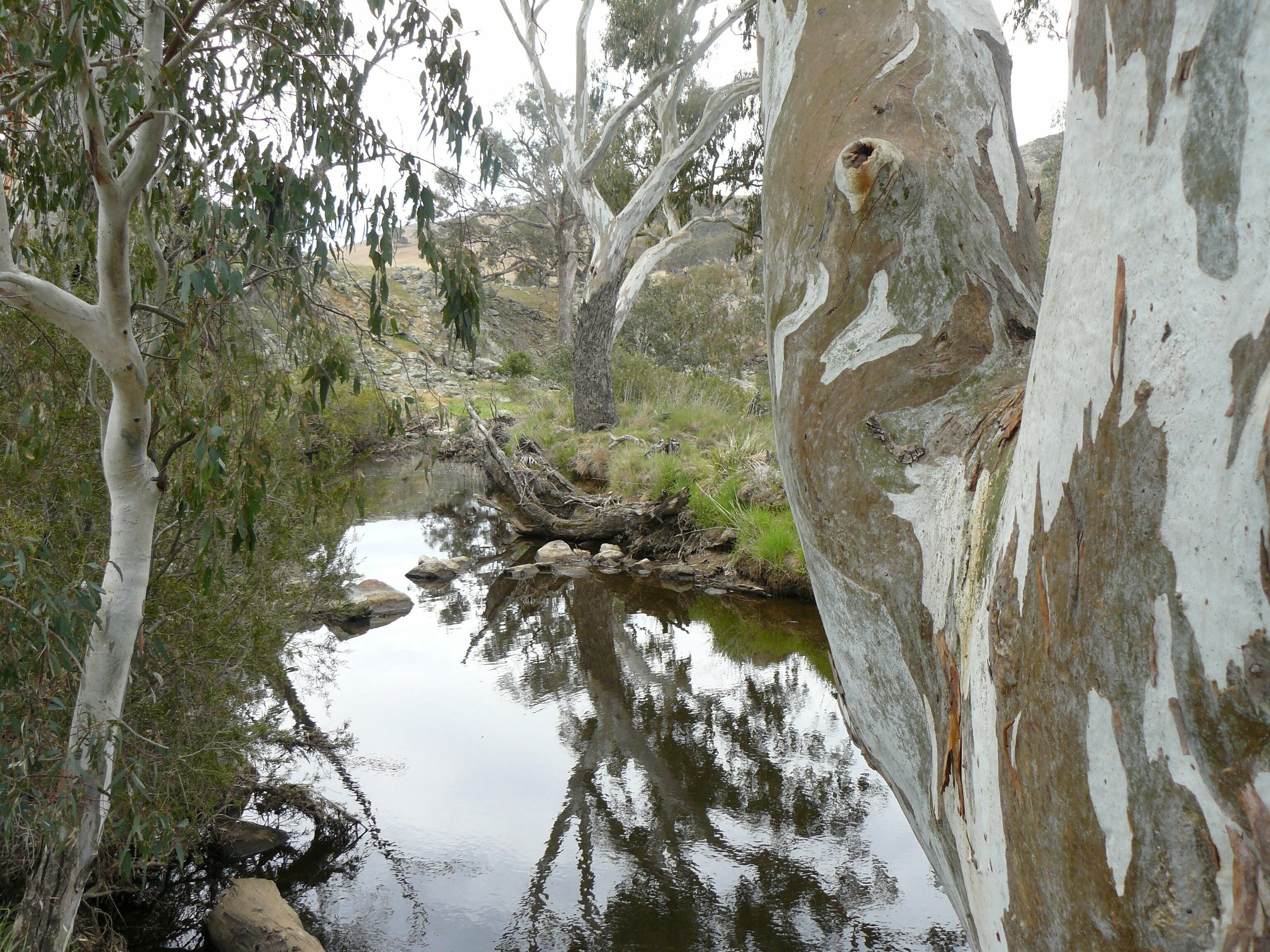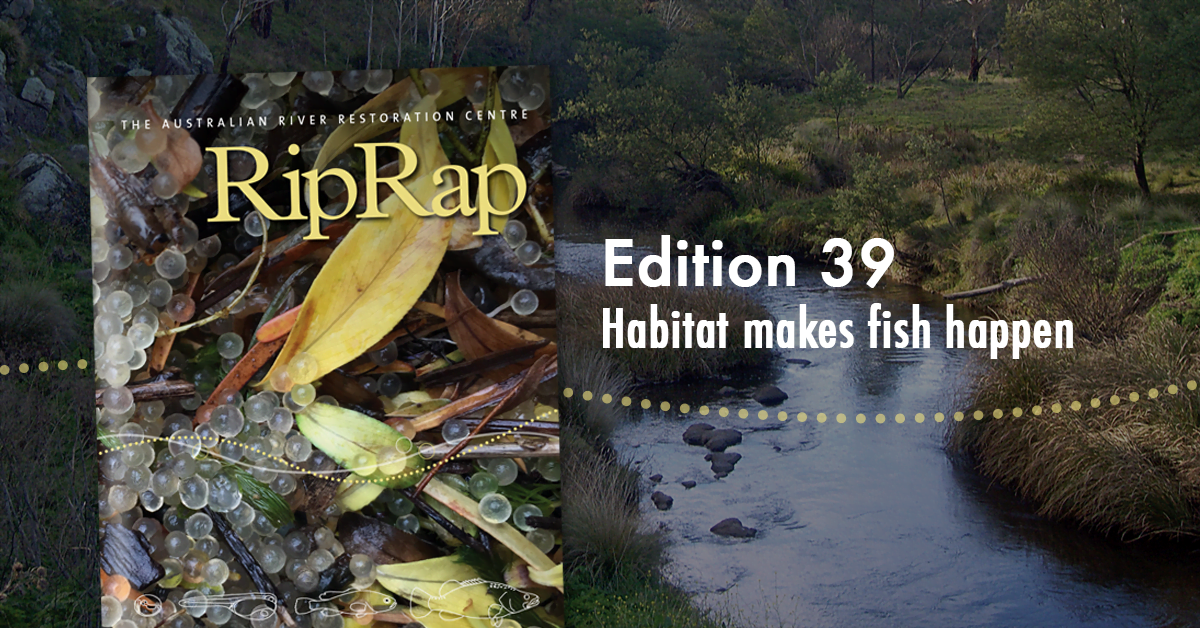Southern pygmy perch were once widespread throughout the southern Murray-Darling Basin (MDB). Within New South Wales (NSW) the species has now been reduced to three small remnant isolated populations, with a total distribution of less than 45 kilometres of stream. These remaining populations are in small tributaries in the upper catchments of the MDB, with the species now appearing to be locally extinct in the regulated sections of the Basin within the state.
Like all our native fish, there is a long list of causes for the decline of Southern pygmy perch, but the most significant of these is the loss of habitat and impacts from alien fish species.
Habitat loss
The primary habitat for Southern pygmy perch is aquatic environments with water plants such as milfoil, ribbonweed, pondweed and phragmites. This is where they live, breed, feed and lay their eggs. So…if we do not have aquatic plants, we do not have pygmy perch.
We are seeing the continued loss of aquatic vegetation because of erosion, flooding, sedimentation and the feeding habits of carp, that uproot vegetation and increase water turbidity. This reduces light penetration making it difficult for plants to grow. In some areas where aquatic plants have disappeared (due to extreme events such as a large flood) they are not re-establishing or recovering due to the activities of carp. This leaves the banks and bed of a stream bare, susceptible to erosion, and with nowhere for small fish to feed, hide from prey and complete their life cycle. It also results in little or no shade over the stream, further increasing water temperatures.

Alien fish impacts
Apart from carp, the remaining populations of Southern pygmy perch are also being significantly impacted by other alien species such as Redfin perch.
The invasions of carp and redfin into habitats previously free of these pest species, is having devestating results. Redfin have recently invaded the population of Southern pygmy perch in the upper Lachlan and have been decimating them as they progress upstream. Sections of Coppabella Creek in the upper Murray were recently invaded by carp and since then, there have been no pygmy perch recorded in this section of the creek, nor has the aquatic vegetation recovered from the 2010-12 flood events.

A barrier is currently keeping carp and redfin out of the upper reaches of Coppabella Creek, and we have seen good recovery in the pygmy perch population and aquatic vegetation in this area. Through my research, I believe that such barriers are warranted because we can show a direct correlation between the presence of Southern pygmy perch and the abundance of carp. Basically…you only get pygmy perch where there are no carp (or very low numbers of them).
We know we need to restore habitat for the Southern pygmy perch, but it is very difficult to restore aquatic plants in the presence of carp. This is a classic example of what comes first, the chicken or the egg! We need plants for our pygmy perch, but the plants cannot be re-established with carp present. The solution: eliminate carp or identify where they have not yet reached.
So what is being done?
In NSW we have been taking several approaches, including:
- undertaking works to maintain existing areas so they remain free from alien species,
- investigating the creation of new areas free from pest species,
- restoring habitat,
- creating refuge populations of Southern pygmy perch,
- identifying new habitats free from alien species and establishing new population in these areas.
We have constructed two barriers to fish passage to keep the upper reaches of the Urumwalla Creek in the Lachlan catchment free from alien fish, as well as repairing a barrier on Coppabella Creek in the Upper Murray catchment. A joint project between Murray Local Land Services (LLS) and Fisheries NSW is looking to potentially reinstate another barrier in the lower reaches of Coppabella Creek, with the subsequent removal of alien fish above it so that Southern pygmy perch can recolonise this waterway.

A joint project between Albury City Council, Murray LLS, Fisheries NSW, the Commonwealth Environmental Water Holder and the Office of Environment and Heritage (NSW) is investigating draining Norman’s Lagoon near Albury, along with installing carp screens on the inlet in an attempt to remove and exclude this pest species, and restore habitat for our pygmy perch.
Fisheries NSW is also working to establish refuge populations within farm dams in the Upper Lachlan catchment. These would act as a back up and could potentially be a source for further translocations to other areas.
We have established another population of Southern pygmy perch in Pudman Creek near Boorowa which is currently free form alien species. Gunning District Landcare is keen to identify sites where other new populations may be established.
The evidence is showing that to maintain and retain Southern pygmy perch we need to provide good habitat free from alien fish species, particularly carp and redfin. These efforts will hopefully enable us to save this little fish in habitat that is free from the negative impacts of introduced pest species.

To read this and other great stories like it, you can purchase or download a copy of RipRap 39 magazine. A pdf version of this story is also available to download here.




